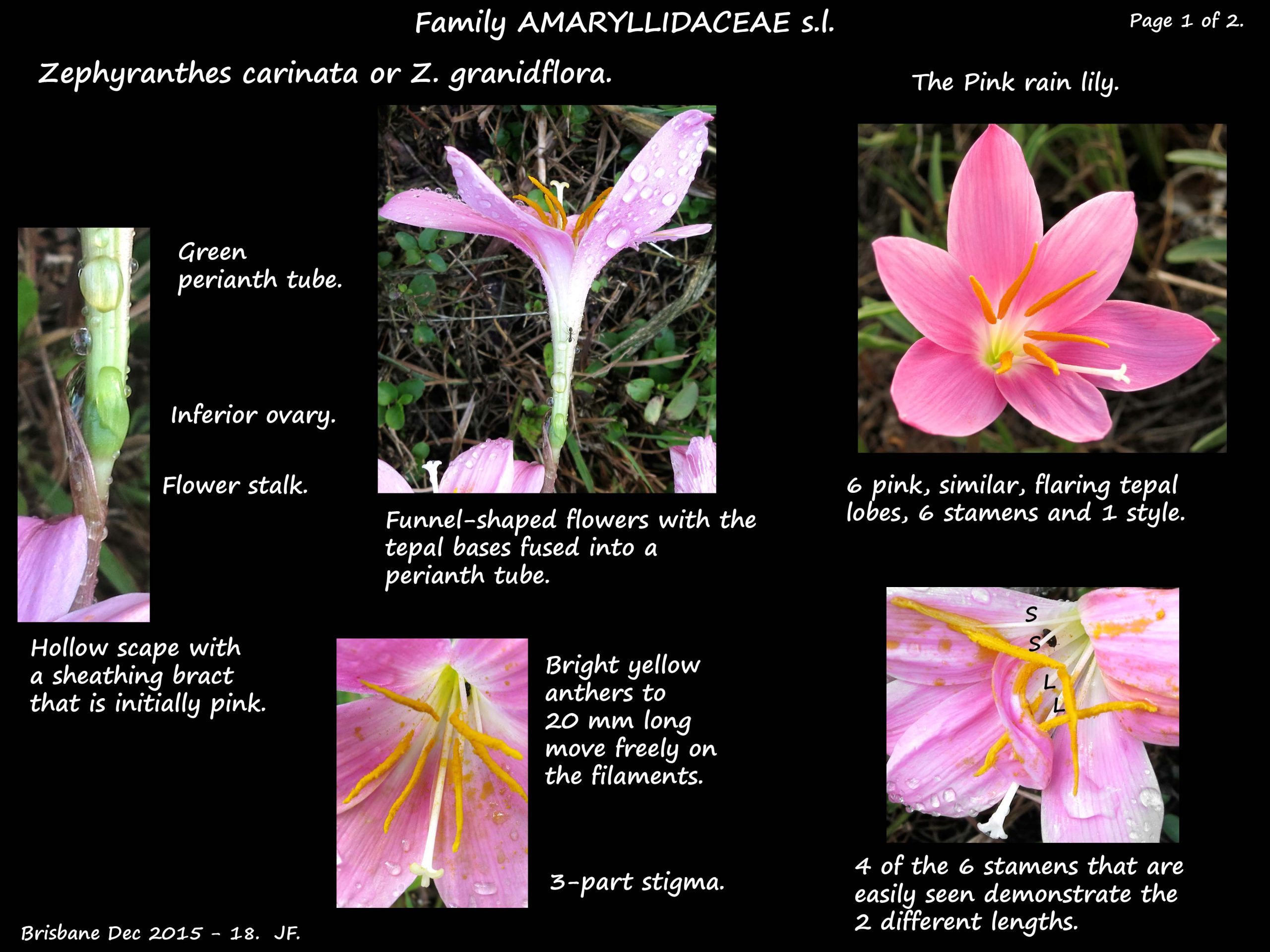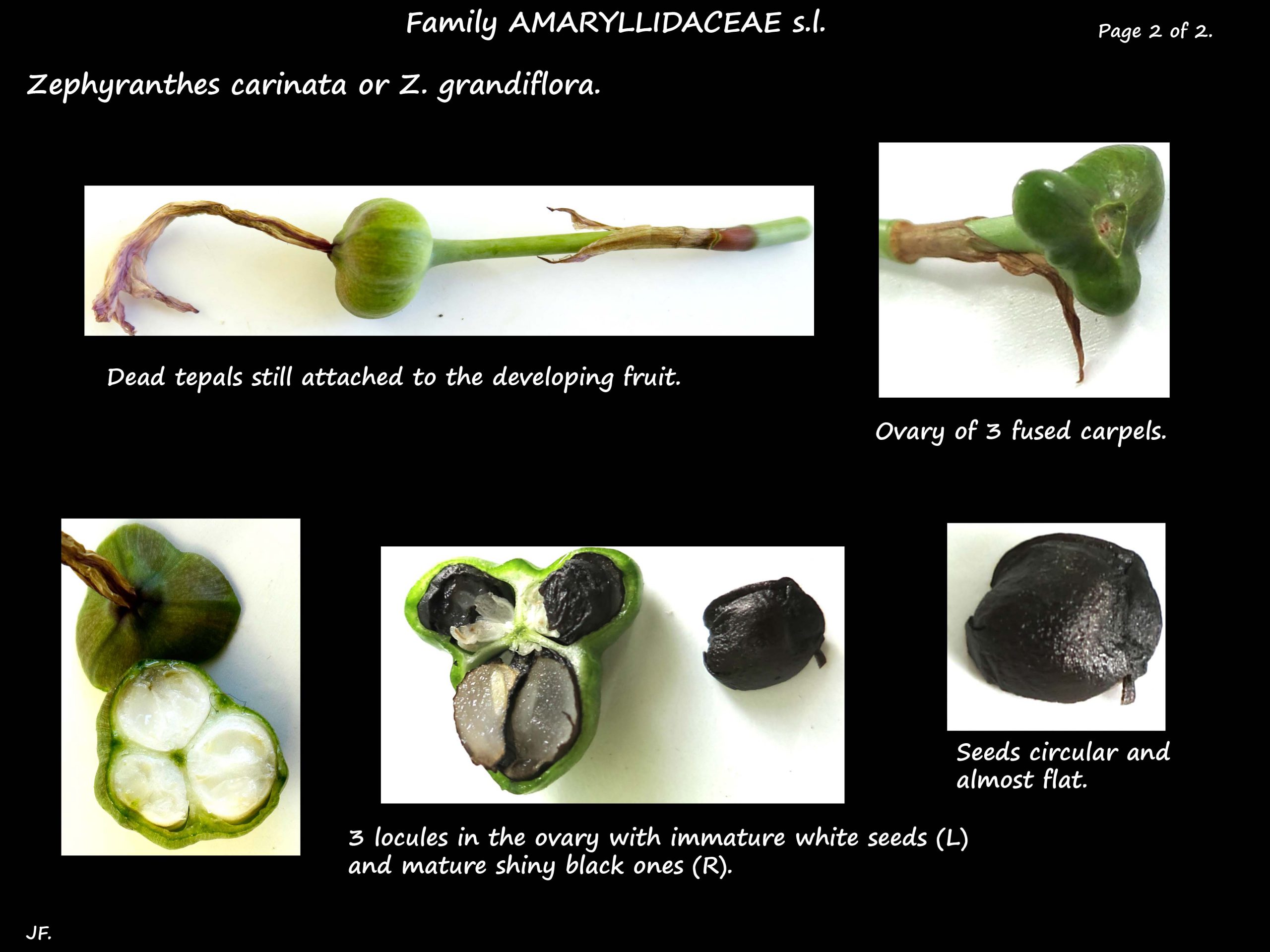Zephyranthes carinata.
It is also seen as Zephyranthes grandiflora.
Kown as the Pink Rain Lily and commonly seen in gardens it is naturalised in eastern Queensland.
The bulbs have a protective reddish skin.
There are several outward spreading leaves up to 45 cm long and a few mms wide.
They may have a reddish base and are not twisted.
They are flat with a shallow, longitudinal groove.
Depending on conditions they can be evergreen or deciduous.
Hollow inflorescence stalks, up to 20 cm high, hold one erect funnel-shaped flower.
The pink, spathe-like bract is around 4 cm long and the flower stalk 2 cm.
The bases of the 6 tepals are fused to form a tube about 1.5 cm long.
The lobes are all similar, about 4 – 5 cm long and spread outwards.
They are pink with a white base.
The 6 subequal stamens, about 2 cm long, are inserted at the top of the tube.
The bright yellow anthers, 15 to 20 mm long, move freely.
The white style is the same length as the stamens or slightly longer.
The stigma is in 3 parts.
Other pink Rain lilies are Zephyranthes rosea, which is often confused with Z. carinata but
with smaller flowers and Habanthus robusta.
Zephyranthes rosea.
A pink species that is widely cultivated and also known as the Pink Rain lily.
Evergreen plants to 20 cm high with leaves only 4 mm wide.
Inflorescence stalks are about 12 cm high with a 3 cm bract with a split tip.
Tepal bases form a green perianth tube a few mms long and the lobes are a bright pink.
Flowers are about 2.5 cm across and 3.5 cm long.
Seeds are flat and black.
J.F.



